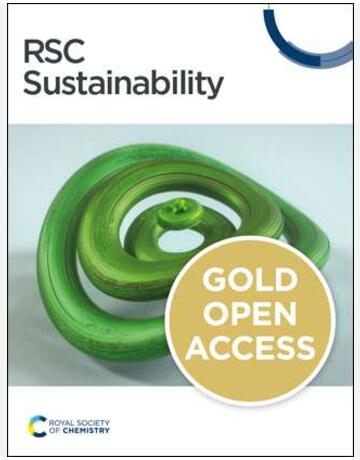可持续吸油混凝土边坡挡墙的有限元结构分析与优化
IF 3.3
3区 环境科学与生态学
Q2 ENVIRONMENTAL SCIENCES
引用次数: 0
摘要
针对石油污染物及其对环境可持续性的影响问题,本研究通过粒度调整和化学改性方法制备了可持续吸油混凝土。研究了碱性活化剂和贝壳粉对可持续吸油混凝土强度和吸油性能的影响。在此基础上,设计了不同结构形式的挡土墙砌块,作为吸油功能混凝土材料使用。采用 ABAQUS 计算了不同结构形式和布置的挡土墙,并对其应力和位移进行了比较,以选出最佳的结构形式和布置。研究结果表明,NaOH 对可持续吸油混凝土的吸油能力有不利影响,导致吸油量从 207.70 kg/m3 降至 104.56 kg/m3;但它提高了混凝土的抗压强度,28 天抗压强度提高了 5.02%。贝壳粉的掺入对可持续吸油混凝土的抗压强度和吸油性能都产生了不利影响。有限元分析结果表明,带有植被空腔的 L 型挡土墙砖具有更好的抗变形能力,在倒置布置下,挡土墙的最大变形量为 1.148 毫米,是所有工况中最小的。该研究为设计具有吸油能力的可持续吸油混凝土挡土墙提供了有效参考。本文章由计算机程序翻译,如有差异,请以英文原文为准。
Finite Element Structural Analysis and Optimization of Sustainable Oil-Absorbing Concrete Slope Retaining Wall
Addressing the issue of oil pollutants and their impact on environmental sustainability, this study prepared sustainable oil-absorbent concrete through particle size adjustment and chemical modification methods. The effects of alkaline activators and seashell powder on the strength and oil absorption performance of the sustainable oil-absorbent concrete were investigated. Based on this, retaining wall blocks with different structural forms were designed for use as oil-absorbing functional concrete materials. Retaining walls with different structural forms and arrangements were calculated by ABAQUS, and their stress and displacement were compared to select the best structural form and arrangement. The research findings indicate that NaOH adversely affected the oil absorption capacity of sustainable oil-absorbent concrete, resulting in a decrease in oil absorption from 207.70 kg/m3 to 104.56 kg/m3; however, it enhanced the compressive strength of the concrete, increasing the 28-day compressive strength by 5.02%. The incorporation of seashell powder exerted a detrimental effect on both the compressive strength and oil absorption performance of the sustainable oil-absorbent concrete. The finite element analysis results show that L-shaped retaining wall bricks with vegetation cavity had better anti-deformation ability, and under the inverted arrangement, the maximum deformation of the retaining wall was 1.148 mm, which was the smallest of all working conditions. This study provides an effective reference for the design of sustainable oil-absorbing concrete retaining walls with oil adsorption capacity.
求助全文
通过发布文献求助,成功后即可免费获取论文全文。
去求助
来源期刊

Sustainability
ENVIRONMENTAL SCIENCES-ENVIRONMENTAL SCIENCES
CiteScore
6.80
自引率
20.50%
发文量
14120
审稿时长
17.72 days
期刊介绍:
Sustainability (ISSN 2071-1050) is an international and cross-disciplinary scholarly, open access journal of environmental, cultural, economic and social sustainability of human beings, which provides an advanced forum for studies related to sustainability and sustainable development. It publishes reviews, regular research papers, communications and short notes, and there is no restriction on the length of the papers. Our aim is to encourage scientists to publish their experimental and theoretical research relating to natural sciences, social sciences and humanities in as much detail as possible in order to promote scientific predictions and impact assessments of global change and development. Full experimental and methodical details must be provided so that the results can be reproduced.
 求助内容:
求助内容: 应助结果提醒方式:
应助结果提醒方式:


